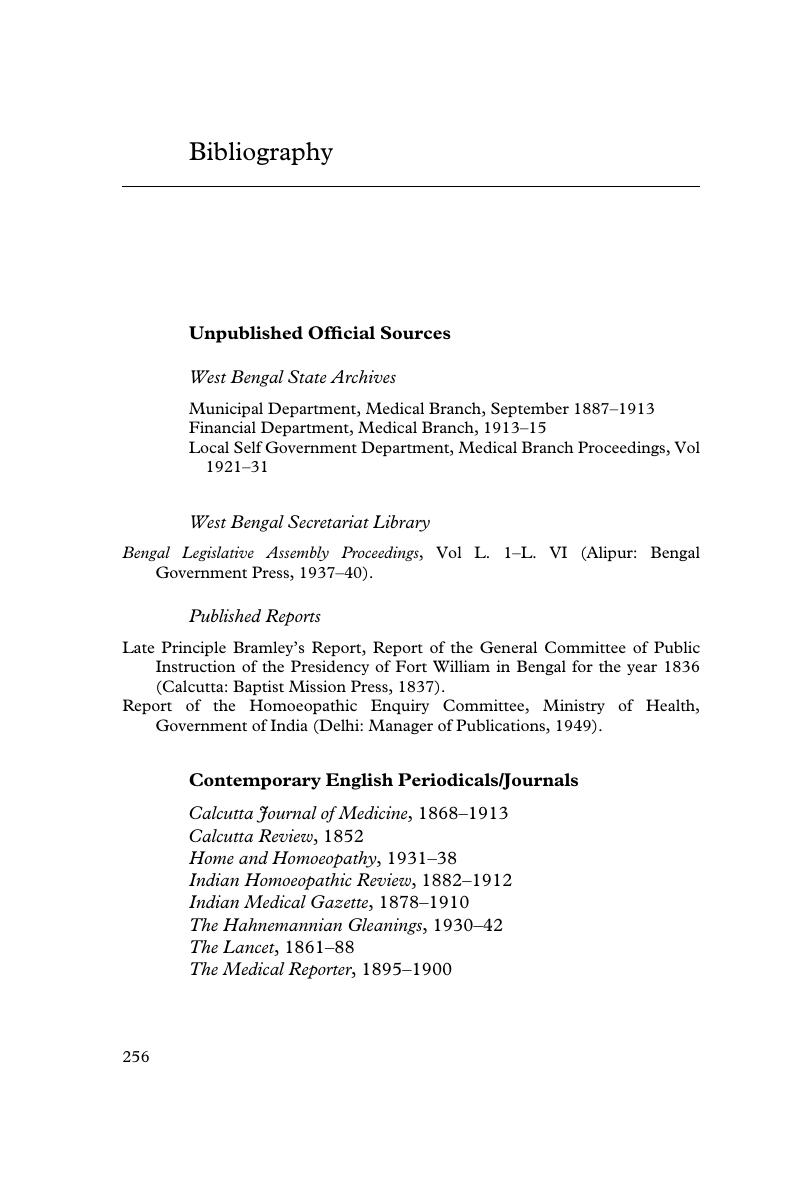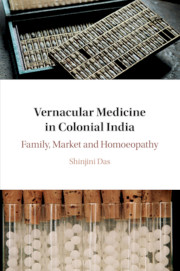Book contents
- Vernacular Medicine in Colonial India
- Vernacular Medicine in Colonial India
- Copyright page
- Dedication
- Contents
- Illustrations
- Acknowledgements
- Note on Translation and Transliteration
- Introduction: ‘A Growing Scandal under British Rule’
- 1 A Heterodoxy between Institutions
- 2 A Family of Biographies
- 3 A Science in Translation
- 4 Healing the Home
- 5 A Homoeopathic Public: Elections, Public Health and Legislation
- Epilogue: A Familiar Science
- Bibliography
- Index
- References
Bibliography
Published online by Cambridge University Press: 22 February 2019
- Vernacular Medicine in Colonial India
- Vernacular Medicine in Colonial India
- Copyright page
- Dedication
- Contents
- Illustrations
- Acknowledgements
- Note on Translation and Transliteration
- Introduction: ‘A Growing Scandal under British Rule’
- 1 A Heterodoxy between Institutions
- 2 A Family of Biographies
- 3 A Science in Translation
- 4 Healing the Home
- 5 A Homoeopathic Public: Elections, Public Health and Legislation
- Epilogue: A Familiar Science
- Bibliography
- Index
- References
Summary

- Type
- Chapter
- Information
- Vernacular Medicine in Colonial IndiaFamily, Market and Homoeopathy, pp. 256 - 284Publisher: Cambridge University PressPrint publication year: 2019

